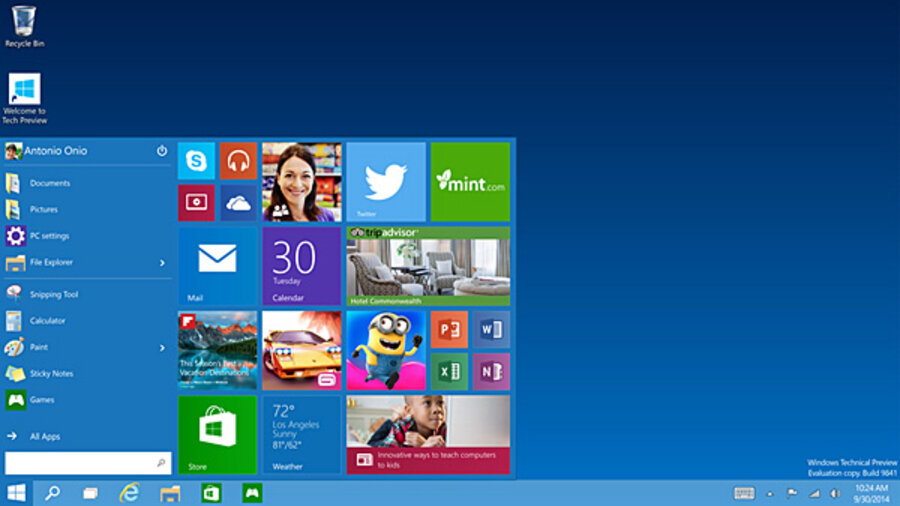Windows 10: Microsoft merges best ideas from Windows 7 and 8
Loading...
On Tuesday, Microsoft gave the world a glimpse into its upcoming Windows 10 operating system. Microsoft's Windows 10 is a mixture of the Windows 7 desktop system and the Windows 8 touch-screen interface. Microsoft says the new system is so different, they are skipping Windows 9.
"Windows 10 represents the first step in a whole new generation of Windows," said Terry Myerson, executive vice president of Microsoft's operating systems group, at Tuesday's press conference. "Windows 10 will be our greatest enterprise platform ever."
Windows 10 is an attempt to improve on their struggling Windows 8 system, which was released in 2012. Windows 8 was Microsoft's move into the touch-screen generation. A major aspect of the operation system was a screen of tiles that could be pressed to open up applications or notifications. But Windows 8 never really took off with consumers. As of October, still more than half of all computers use Windows 7, while only 12 percent use Windows 8 or 8.1, according to NetMarketshare. Many customers complained that the new system wasn't easily usable on keyboard devices.
“We didn’t quite get it right,” Joe Belfiore, a corporate vice president in Microsoft’s operating systems group, said at the conference.
The new Windows 10 operating system is trying to mix the best of the desktop system and touch-screen devices. For devices with screens larger than 7 inches, the homepage is designed after the Windows 7 system, but when users click the menu button, they will be able to easily access the tile interface. This hides the tile interface from those desktop users who find it hard to use with a keyboard.
On hybrid devices (touch-screen devices with attachable keyboards such as the Windows Surface), Windows 10 will default to the tile interface when the keyboard is detached, and switch to the traditional desktop page when it is attached.
For devices with screens under 7 inches, the system will continue to use the tile interface.
“This is what Windows 8 should have been,” Carolina Milanesi, chief of research with Kantar Worldpanel ComTech, told the Associated Press. "Here they are doing the right thing."
Windows 8 uses different systems for different devices, desktop, Xbox, and cellphones. Under that system, developers had to create apps for all three systems. Windows 10 will be one system for all the devices. This makes it easier for developers to create apps and means customers easily switch systems and avoid buying an app multiple times.
With the operating system, Microsoft is trying to appease its biggest customer: businesses. Most companies never bought into the Windows 8 system. Only about one in five organizations offers Windows 8 to employees, according to a Forrester Research study, according to The New York Times.
“Microsoft needs to give enterprises reasons to move to a new version before it becomes a crisis,” David Johnson, a Forrester analyst, told the Times.
Windows 10 won't be available until next spring, but Microsoft is releasing an early version of the operating system on Wednesday. It wants business customers to use the new software and provide feedback.
"We've never done this before," Mr. Myerson said. "Together with the feedback you'll provide us, we believe we can build a product that all of us will love."






